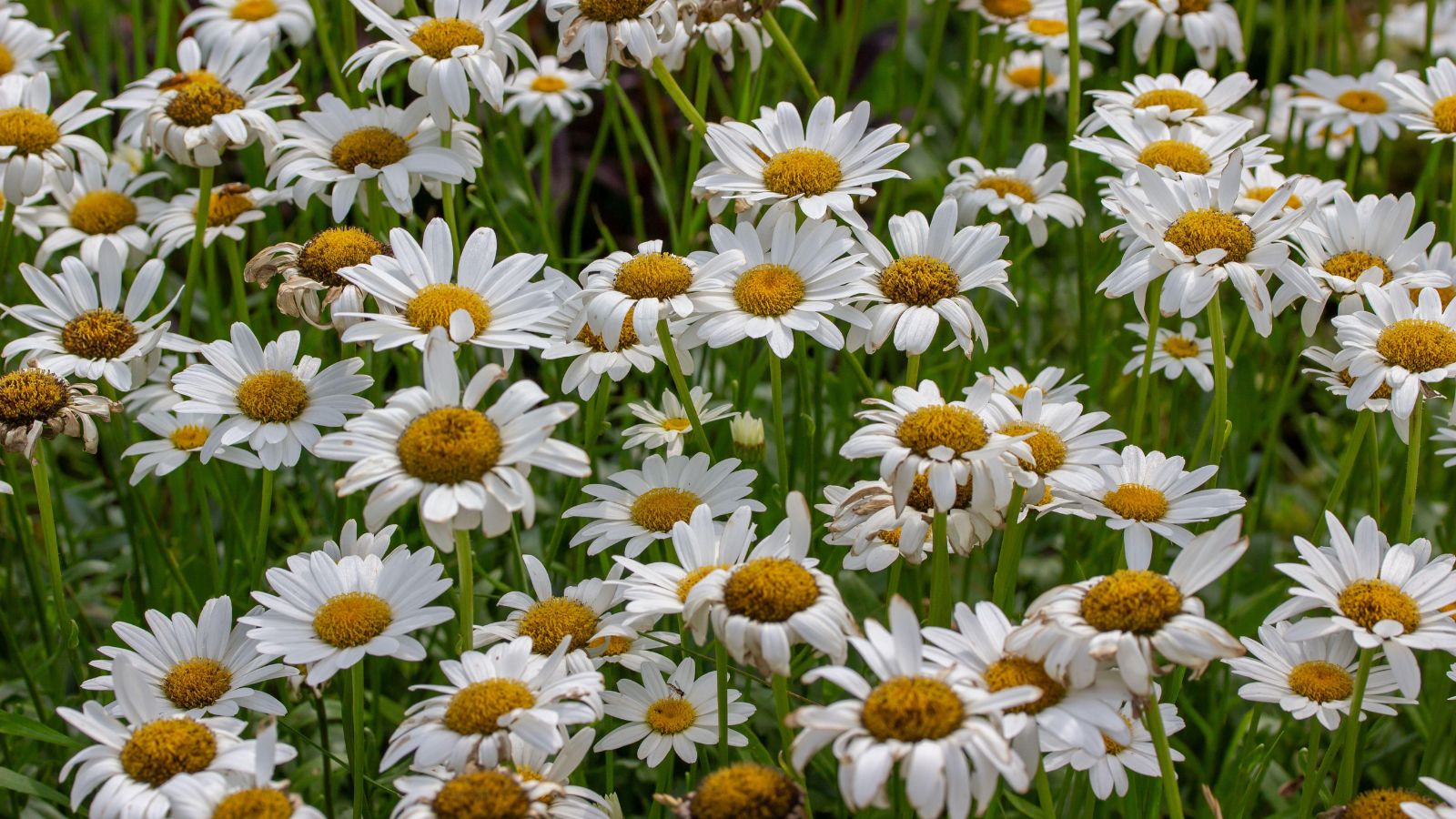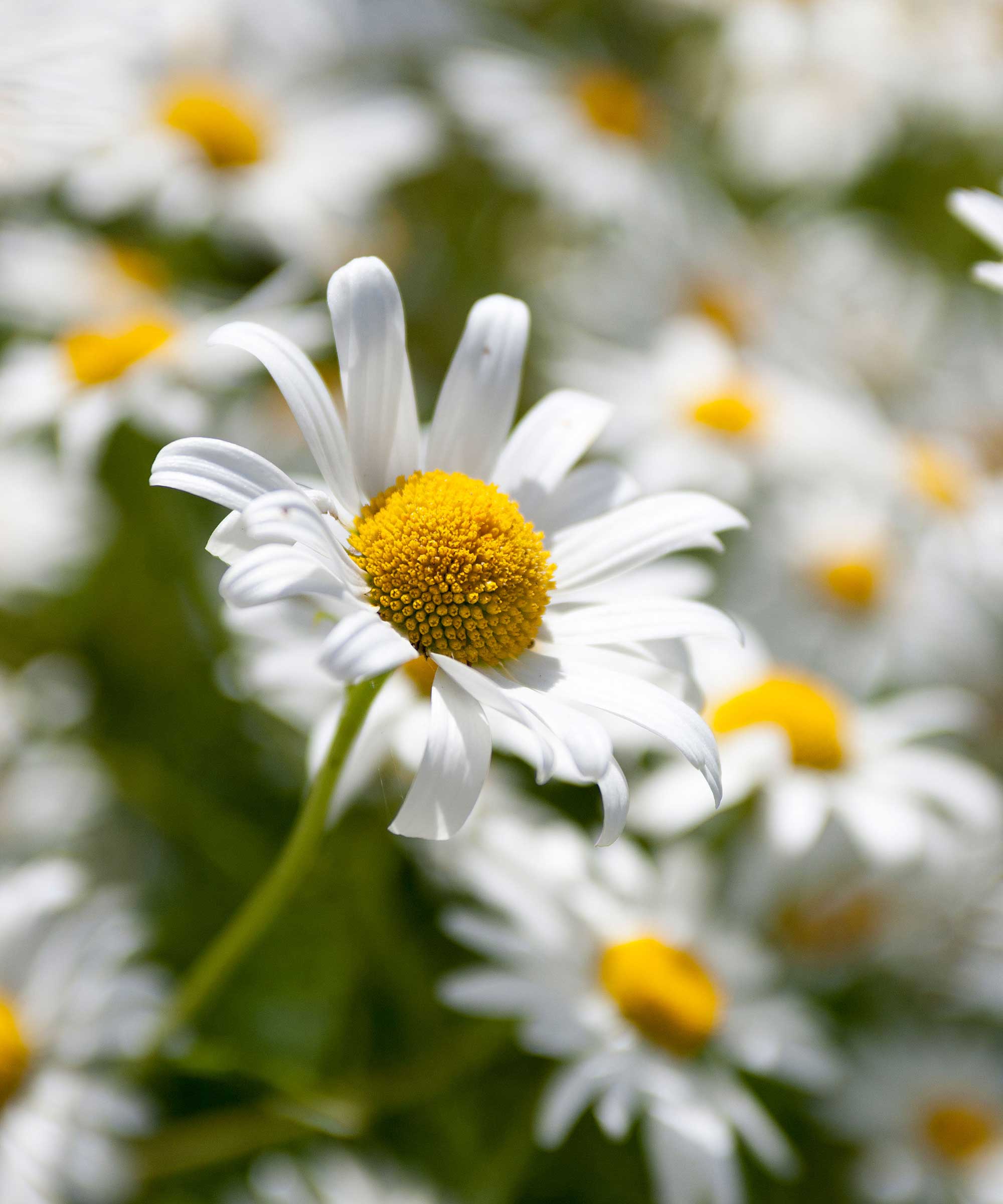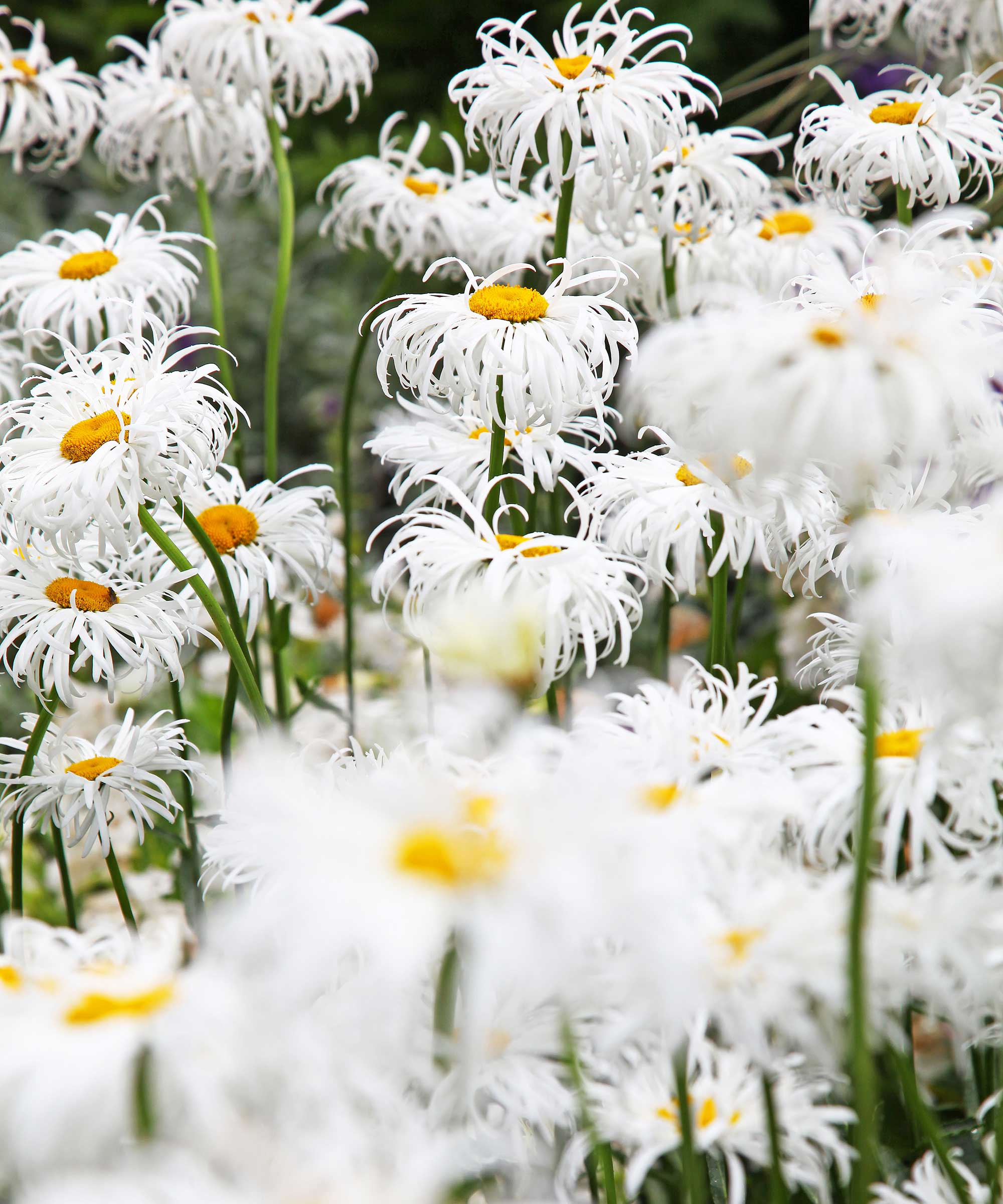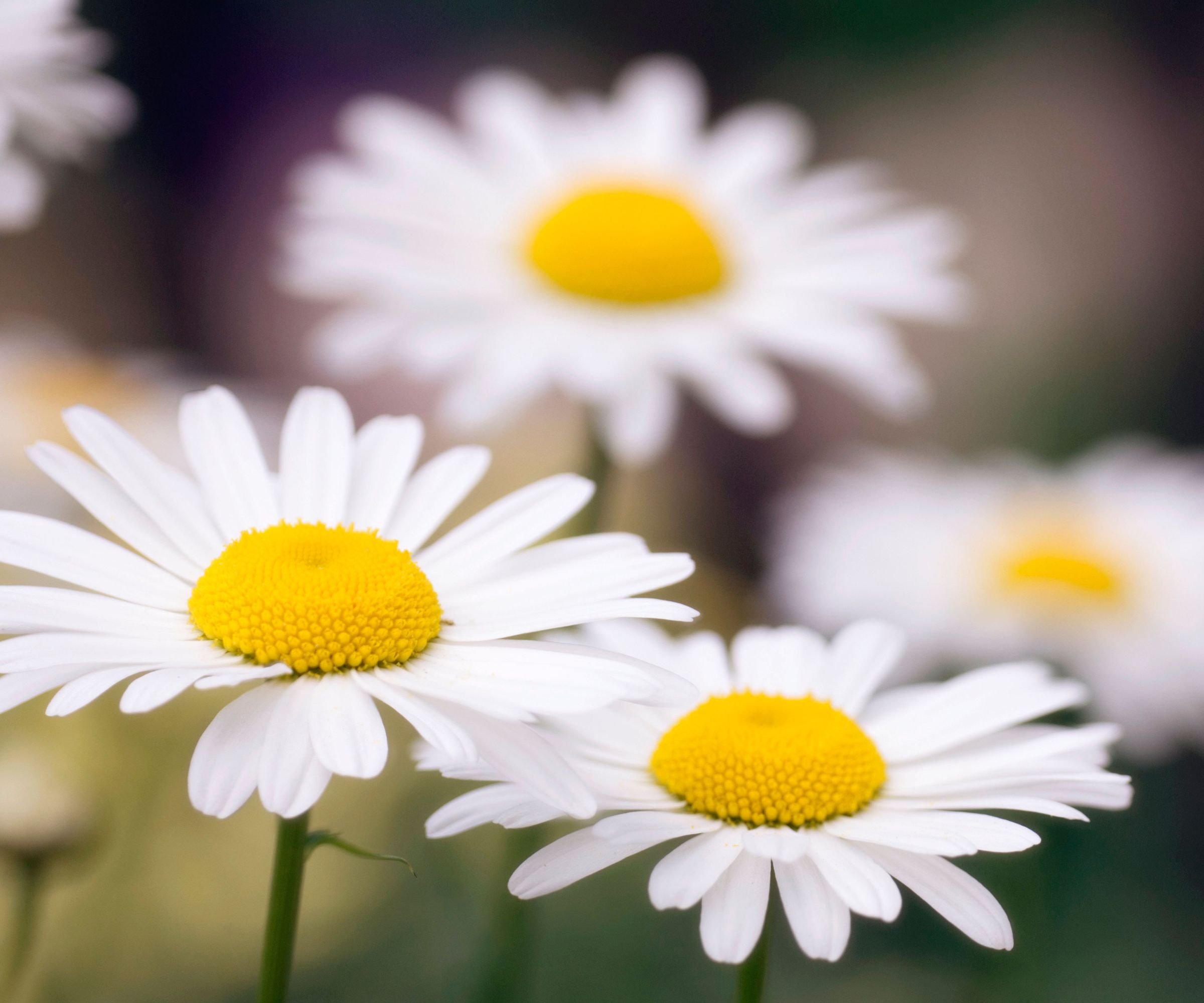How to grow Shasta daisy – an expert grower say this luminous perennial will provide a wildflower look with minimal effort
Leave the wild daisies for the meadows and opt for Shasta daisies, which is bred for garden beds and borders


Children draw daisies because they are sweet, simple and sunny. The Shasta daisy brings all that pure floral joy to a garden – and more. A hybrid perennial bred by renowned 1800s American horticulturist Luther Burbank, Leucanthemum x superbum combines traits from multiple wild daisy species from Europe and Japan to create a large-flowered daisy with a long bloom period and a more robust and structured habit for a garden.
You’ll find Shasta daisies in full sun gardens throughout USDA zones 4-9. It’s a popular choice for the gardener with sustainability and the environment in mind as it soldiers through drought and provides sustenance for pollinators and beneficial insects. Shasta daisies are popular in cutting gardens, as their blooms will last in a floral arrangement for a week or more.
Close to six dozen varieties of Shasta daisy exist, thanks to the pioneering Burbank and generations of breeders who’ve succeeded him. Some of the best Shasta daisies are offered in the US, but they’ve become a popular flower in Europe and fit nicely with that nostalgic, cottage garden style. I spoke to a Shasta daisy expert, who shares her years of experience cultivating this reliable garden perennial.

How to grow Shasta daisy
Luther Burbank named his hybrid daisy for the snowy peak of California’s Mount Shasta. While we praise the plant’s white-petaled ray flowers and yellow disc flowers, the stems offer so much to be admired.
After all, the dense mass of stems with dark-green leaves provide the necessary dark backdrop against which those fried egg-looking flower shine.
Growing habits of Shasta daisy

‘The Shasta daisy is a real workhorse plant for the garden,’ Says Colleen Vanderlinden, garden writer and co-author of Edible Gardening for the Midwest and Vegetable Gardening for the Midwest, adding that they can be planted in beds, borders and containers.
‘They have a fairly long bloom time, which makes them perfect for providing interest in the garden for weeks on end, while also serving as a food source for pollinators.’ Colleen notes that bees, butterflies, parasitic wasps, lacewings, ladybugs visit Shasta daisies. ‘You name it, it probably likes Shasta daisies. It's a great plant for a pollinator garden.’
Design expertise in your inbox – from inspiring decorating ideas and beautiful celebrity homes to practical gardening advice and shopping round-ups.
If planting in a container, be sure to find a variety that performs well in that space. ‘Some Shasta daisies form huge clumps with flowers that can reach two or more feet tall!’ Colleen explains. ‘Shorter varieties, like 'Snowcap' or 'Darling Daisy' are good, manageable choices for containers.’
You can find ‘Snowcap’ plants on Amazon and ‘Darling Daisy’ varieties also available from Amazon.
If you’re creating your first garden bed, Colleen recommends Shasta daisies as one of its components. ‘If you’re new, it’s a good plant to start with,’ she says from experience. ‘I grew it (and daylilies) in the first perennial bed I ever planted, and it gave me a lot of confidence as a new gardener.’
She recommends the varieties 'Alaska' and 'Becky.' 'They always have a place in my garden, Colleen says. 'They're perfect for filling spaces, produce tons of flowers, and are easy to care for.'

Colleen Vanderlinden is the co-author of Edible Gardening for the Midwest and Vegetable Gardening for the Midwest. She's written for Mother Earth News, TreeHugger, The Spruce, Love to Know, and House Digest. She's gardened in everything from containers and borrowed plots to an urban lot with clay soil and northern Michigan acreage full of sandy soil.
Care guide for Shasta daisy

- Soil: ‘It’s not overly picky about soil,’ Colleen says. I’ve grown it in loamy soil, sandy soil, and clay, and it's grown just fine. But it does much better in well-drained soils since they're prone to root rot.’
- Light: Provide full sun to part shade for best garden performance.
- Watering: Colleen says Shasta daisies are somewhat drought resistant. ‘They can go for a while without regular watering once they're established. Just avoid overwatering, since root rot can be an issue.’ A soaker hose from Walmart can ensure your Shasta daisies receive consistent and even watering.
- Fertilizing: 'Use a balanced, slow-release fertilizer,’ Colleen suggests. ‘All I’ve ever done with mine is give them a topdressing of compost in early spring and they grow very well,’ she says.
- Maintenance and Pruning: Given the right conditions—plenty of sun and good soil—Shasta daisies are pretty easy to care for. ‘Water them regularly, especially during long, dry periods,’ Colleen advises. ‘Deadhead them if you want to extend the blooming season. In spring, cut back the previous year’s stems and foliage. You can do this in fall, but I like to leave as much cover in the garden as I can for the insects.’ This 3-piece pruner set from Target ensures you’ll have the correct tool for your Shasta daisy pruning tasks.
- Toxicity: Colleen notes that the ASPCA lists Shasta daisies as mildly toxic to pests. ‘The sap can also cause a skin irritation for some people,’ she adds.
- Pests: ‘Root rot and verticillium wilt can sometimes be an issue,’ Colleen says. ‘As for deer and rabbits, they rarely bother them.’
FAQs
How often should I divide Shasta daisies?
Divide them every 2 to 3 years in early spring or late summer to maintain vigor and prevent overcrowding.
You may mistake Montauk daisies for Shasta daisies as they are similar in flower size and plant habit. There is one big difference. Shasta daisies bloom from June through September. Montauk daisies, on the other hand, bloom later starting in late August and bloom through October. They are even able to survive a light frost.
For other classic perennial plants for late-summer and fall color, check out our guide to some of the best fall-flowering perennials and give those Shasta daisies something to shine with in your garden.

Ellen Wells is a horticultural communications consultant with 30 years experience writing about all aspects of the gardening world, and for GardeningKnowHow.com since 2024. She specializes in retail horticulture, vegetable gardening and tropical plants. Ellen is based in southern New England where she gardens in zone 7a.